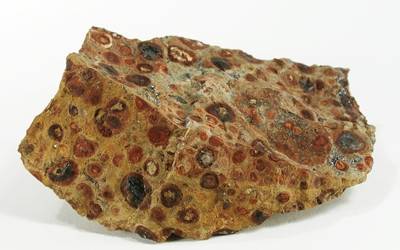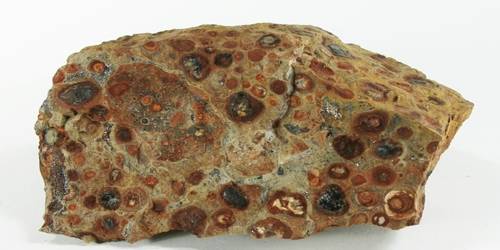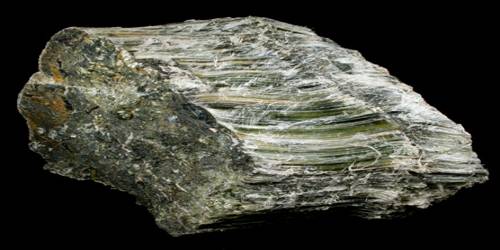Bauxite, an aluminum ore, is the world’s main source of aluminum. It is not a mineral. It is a rock formed from a laterite soil that has been severely leached of silica and other soluble materials in a wet tropical or subtropical climate. It consists mostly of the minerals gibbsite (Al(OH)3), boehmite (γ-AlO(OH)) and diaspore (α-AlO(OH)), mixed with the two iron oxides goethite and hematite, the clay mineral kaolinite and small amounts of anatase (TiO2) and ilmenite (FeTiO3 or FeO.TiO2). It is the primary ore of aluminum. Almost all of the aluminum that has ever been produced has been extracted from bauxite.
In 1821 the French geologist Pierre Berthier discovered bauxite near the village of Les Baux in Provence, southern France. In 1861, French chemist Henri Sainte-Claire Deville named the mineral “bauxite”.

General properties
- Composition: Basic aluminum hydroxide
- Color: Beige, yellow, white, gray, brown, reddish-brown, pink
- Streak: White
- Hardness: 1 – 3
- Crystal System: Amorphous
- Transparency: Opaque
- Specific Gravity: 2.0 – 2.6
- Luster: Dull
- Cleavage: None
- Fracture: Earthy
- Tenacity: Brittle
- In Group: Oxides; Hydroxides
Bauxite does not have a specific composition. It is a mixture of hydrous aluminum oxides, aluminum hydroxides, clay minerals, and insoluble materials such as quartz, hematite, magnetite, siderite, and goethite.
Bauxite is the principal ore of aluminum. The first step in producing aluminum is to crush the bauxite and purify it using the Bayer Process. In the Bayer Process, the bauxite is washed in a hot solution of sodium hydroxide, which leaches aluminum from the bauxite. The aluminum is precipitated out of solution in the form of aluminum hydroxide, Al(OH)3. The aluminum hydroxide is then calcined to form alumina, Al2O3.
Information Source:
















